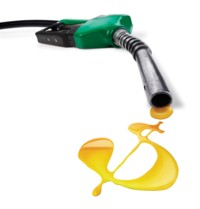The Cellulosic Ethanol Debacle
 Congress mandated purchase of 250 million gallons in 2011. Actual production: 6.6 million.
Congress mandated purchase of 250 million gallons in 2011. Actual production: 6.6 million.
“We’ll fund additional research in cutting-edge methods of producing ethanol, not just from corn but from wood chips and stalks or switch grass. Our goal is to make this new kind of ethanol practical and competitive within six years.”
—George W. Bush, 2006 State of the Union address
Years before the Obama Administration dumped $70 billion into solar and wind energy and battery operated cars, and long before anyone heard of Solyndra, President Bush launched his own version of a green energy revolution. The future he saw was biofuels. In addition to showering billions of dollars on corn ethanol, Mr. Bush assured the nation that by 2012 cars and trucks could be powered by cellulosic fuels from switch grass and other plant life.
To launch this wonder-fuel industry, the feds under Mr. Bush and President Obama have pumped at least $1.5 billion of grants and loan subsidies to fledgling producers. Mr. Bush signed an energy bill in 2007 that established a tax credit of $1.01 per gallon produced.
Most important, the Nancy Pelosi Congress passed and Mr. Bush signed a law imposing mandates on oil companies to blend cellulosic fuel into conventional gasoline. This guaranteed producers a market. In 2010 the mandate was 100 million barrels, rising to 250 million in 2011 and 500 million in 2012. By the end of this decade the requirements leap to 10.5 billion gallons a year.
When these mandates were established, no companies produced commercially viable cellulosic fuel. But the dream was: If you mandate and subsidize it, someone will build it.
Guess what? Nobody has. Despite the taxpayer enticements, this year cellulosic fuel production won’t be 250 million or even 25 million gallons. Last year the Environmental Protection Agency, which has the authority to revise the mandates, quietly reduced the 2011 requirement by 243.4 million gallons to a mere 6.6 million. Some critics suggest that even much of that 6.6 million isn’t true cellulosic fuel.
The EPA has already announced that the 2012 mandate of 500 million gallons is unattainable, so it is again expected to lower the mandate to fewer than 12 million gallons for next year.
One reason the mandates can’t be met is the half-dozen or so companies that received the first round of subsidies to produce cellulosic fuel never got off the ground. Some 70 million gallons, or 70% of the cellulosic supply to meet the 2010 mandate, was supposed to come from Alabama-based Cello Energy. Incredibly, those projections were made before Cello had built its plant to produce the fuel and before the technology was proven to work.
In 2009 a jury in a civil fraud case ruled that Cello had lied about how much cellulosic fuel it could produce. Some of the fuel that Cello showed to investors was derived from petroleum, not plants. The firm produced little biofuel and in October 2010 it declared bankruptcy.
It gets worse. Because there was no cellulosic fuel available, oil companies have had to purchase “waiver credits”—for failing to comply with a mandate to buy a product that doesn’t exist. In 2010 and this year, the EPA has forced oil companies to pay about $10 million for these credits. Since these costs are eventually passed on to consumers, the biofuels mandate is an invisible tax paid at the gas pump.
And for what? An October 2011 report on biofuels by the National Academy of Sciences concluded that the mandates “may be an ineffective way to reduce global greenhouse gas emissions.” Because production is so low, advanced cellulosic fuels also do very little to reduce U.S. dependence on foreign oil. The report notes that “currently, no commercially viable biorefineries exist for converting cellulosic biomass to fuel.”
Why? Because of what the National Academy report calls “the high cost of producing cellulosic biofuels compared with petroleum-based fuels, and uncertainties in future biofuel markets.” The report does say that technological breakthroughs could make cellulosic fuels cost-competitive in the future, but that same leap of faith has driven subsidies to alternative energy for 40 years.
Still, the subsidies roll on. In August 2011 the Obama Administration funded a $510 million program in partnership with the Navy to produce advanced biofuels for the military. In September the feds loaned $134 million to Abengoa Bioenergy to build a cellulosic plant in Kansas. The optimistic forecast is that this plant will produce about 23 million barrels a year—a fraction of what Washington promised in 2006. In September the Department of Energy provided POET, which advertises itself as the “world’s largest ethanol producer,” a $105 million loan guarantee for cellulosic.
To recap: Congress subsidized a product that didn’t exist, mandated its purchase though it still didn’t exist, is punishing oil companies for not buying the product that doesn’t exist, and is now doubling down on the subsidies in the hope that someday it might exist. We’d call this the march of folly, but that’s unfair to fools.
You can return to the main Market News page, or press the Back button on your browser.

